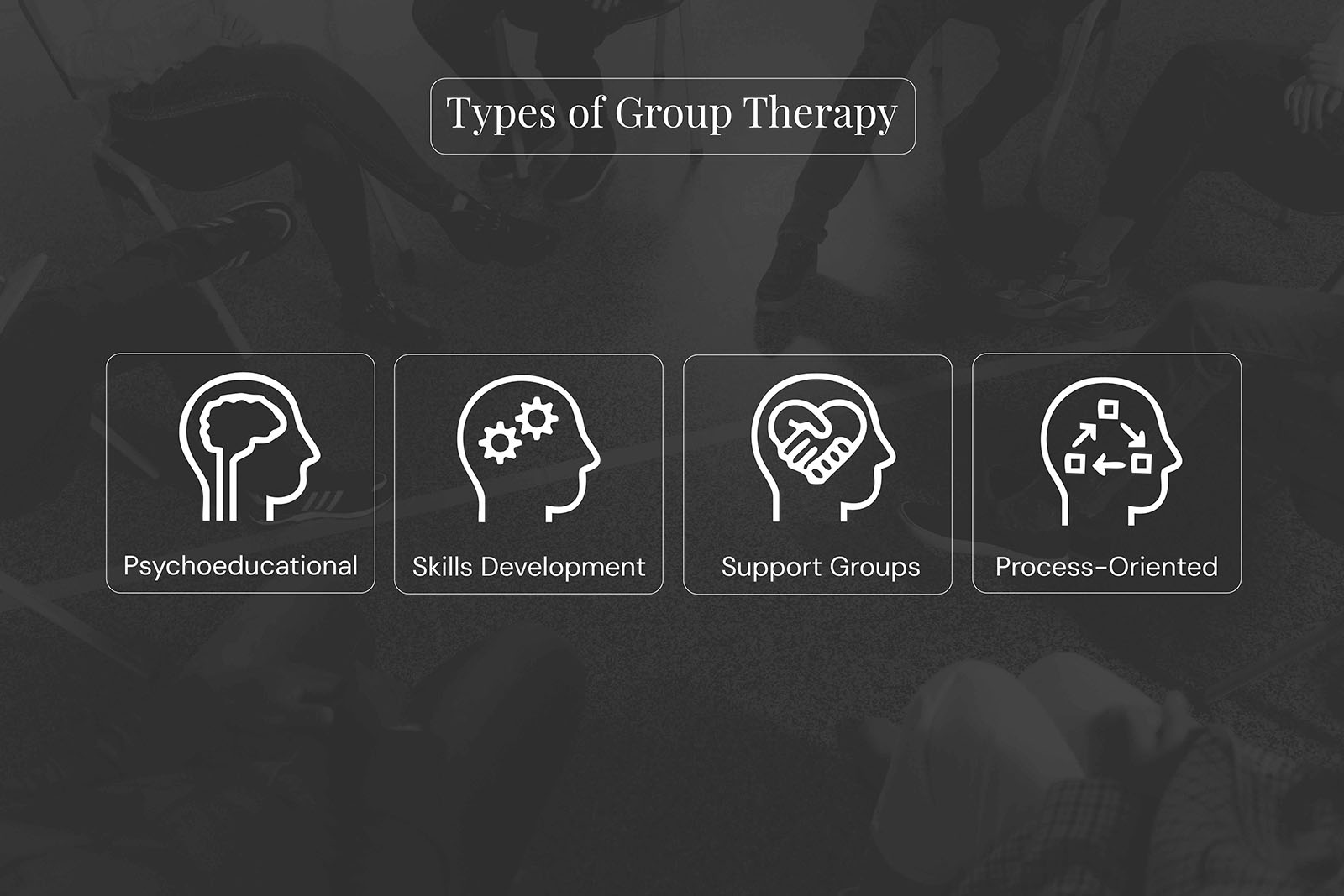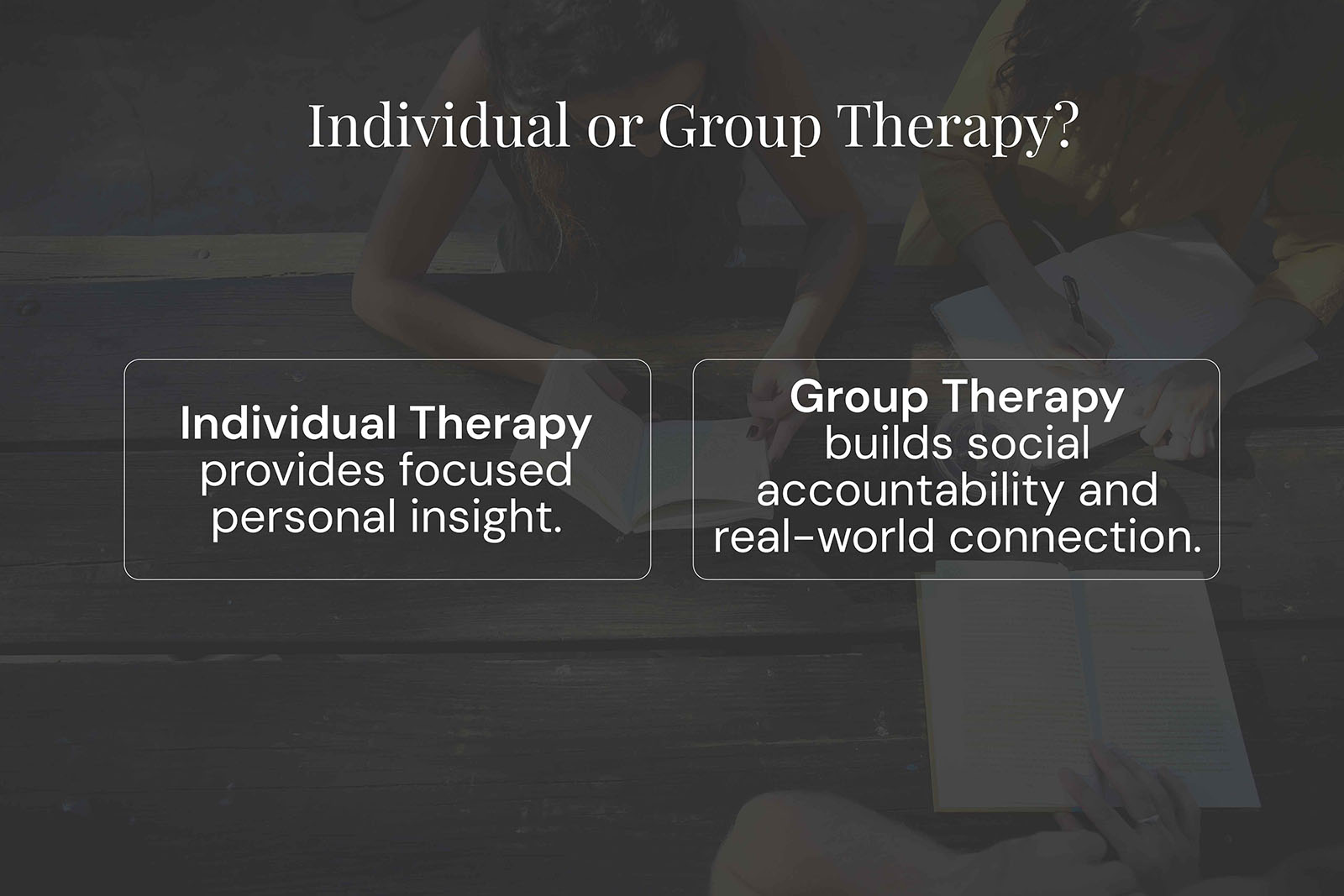Group therapy is a structured form of psychotherapy where multiple participants meet together with one or more therapists to discuss their challenges, share experiences, and build coping strategies. Unlike individual therapy, group therapy leverages the dynamics of shared insight and social interaction to support healing.
While it may seem intimidating at first, group therapy has proven to be highly effective in treating a wide range of mental health and substance use disorders.
What Happens During a Group Therapy Session?
A typical group therapy session involves six to twelve participants who meet regularly at a scheduled time. Sessions usually last between 60 and 90 minutes and are led by a licensed therapist trained in group dynamics.
During the session:
- The therapist may begin with a prompt, theme, or topic for discussion.
- Members take turns speaking, responding, and listening to each other.
- The therapist guides the discussion to ensure it stays productive and respectful.
- Confidentiality is emphasized to create a safe environment.
Some groups follow an open format, allowing participants to discuss whatever is on their minds. Others are structured around specific goals or therapeutic models such as cognitive behavioral therapy (CBT), dialectical behavior therapy (DBT), or relapse prevention.
What Makes Group Therapy Effective?
Group therapy works by combining professional guidance with peer support. The shared setting helps participants recognize that they are not alone in their struggles, reducing feelings of isolation and shame.
Several mechanisms contribute to its effectiveness:
- Feedback from others in similar situations can offer new perspectives.
- Hearing others' progress can inspire hope and motivation.
- The group setting promotes accountability and encourages regular attendance.
- It provides a social space to practice interpersonal skills and emotional expression.
For people in recovery from addiction, group therapy can be especially valuable. It builds a sense of community, which is often lost during substance abuse. Being part of a group reinforces healthy behavior patterns and strengthens motivation to stay clean.
Types of Group Therapy

There are different forms of group therapy, each with its own structure and goals. Some of the most common types include:
- Psychoeducational Groups
- These groups focus on teaching specific topics such as coping skills, addiction education, or stress management.
- Skills Development Groups
- Here, participants learn and practice new behavioral or emotional regulation skills.
- Support Groups
- Support groups are designed to create a safe space where members can share and support each other’s experiences. These are often ongoing and less structured.
- Process-Oriented Therapy Groups
- These groups focus on exploring emotions and interpersonal dynamics as they emerge naturally within the group. They often address deeper emotional issues and relational patterns.
Who Benefits from Group Therapy?
Group therapy is used to treat a wide variety of conditions. It’s especially beneficial for individuals struggling with:
- Substance use disorders
- Depression or mood disorders
- Anxiety and panic disorders
- Grief and loss
- Trauma and PTSD
- Social isolation or low self-esteem
It’s also useful for people transitioning out of inpatient programs or those seeking ongoing support in outpatient settings. The group context helps individuals maintain their progress and stay connected to a supportive community.
How Is Group Therapy Different From Individual Therapy?
Group therapy and individual therapy serve different but complementary purposes. In individual therapy, the therapist’s full attention is on one client, allowing for deep exploration of personal issues.
In contrast, group therapy provides a broader range of interaction:
- Participants hear different viewpoints.
- Members practice responding to others’ experiences.
- Clients learn how their behavior affects others in real time.
Many treatment programs use a combination of both methods, tailoring the approach to each person’s needs. In many recovery environments, individual sessions are used to work through complex trauma or personal history, while group therapy helps people build accountability and real-world connection.

What Are the Challenges?
Group therapy isn’t without its challenges. Some participants may feel hesitant to share in front of others, especially during early sessions. Others may worry about being judged or misunderstood.
Therapists are trained to manage these dynamics and ensure that everyone feels heard and respected. Over time, most members grow more comfortable and begin to engage more fully.
Other challenges include:
- Conflicts between members
- Uneven participation
- Emotional triggers caused by others’ stories
These moments, however, often become opportunities for growth. Learning to navigate conflict, listen empathetically, and tolerate discomfort are valuable life skills developed in the group setting.
How to Get the Most Out of Group Therapy
Making the most of group therapy requires commitment, openness, and a willingness to be vulnerable. Participants are encouraged to:
- Attend sessions consistently
- Respect confidentiality and boundaries
- Speak honestly about their feelings and experiences
- Listen without judgment
- Offer constructive feedback when appropriate
While it may feel awkward at first, many people report that group therapy becomes a powerful and transformative part of their recovery journey.
The Role of Group Therapy in Addiction Recovery

For those recovering from substance use, group therapy provides essential structure and support. It offers a safe place to talk about cravings, relapses, and triggers without fear of stigma. More importantly, it builds social connection, a vital factor in long-term sobriety.
Individuals who feel isolated in their recovery often benefit most from group interaction. The sense of shared experience reduces shame and helps people see their challenges in a broader context. Many programs combine group sessions with medical detox, counseling, and individualized care to create a comprehensive recovery plan. For those seeking this type of holistic support, many providers offer group therapy as a core component of treatment.
What Is Subgrouping in Group Therapy?
As group therapy sessions evolve, smaller alliances or cliques may naturally form within the group. This phenomenon is known as subgrouping. It can be both beneficial and disruptive, depending on how it’s managed. To learn more about how subgrouping works and why it matters, see the article What is subgrouping in group therapy.
Conclusion
Group therapy works by fostering connection, accountability, and personal insight in a shared therapeutic environment. It helps individuals practice vulnerability, learn from others, and build emotional strength. While it may feel unfamiliar at first, it can become one of the most valuable tools in a person’s recovery and mental health journey.
.jpg)


